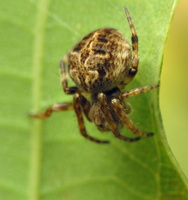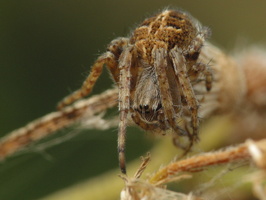- sort orderDefault
Photo title, A → Z
Photo title, Z → A
✔ Date created, new → old
Date created, old → new
Date posted, new → old
Date posted, old → new
Visits, high → low
Random - Google Map
- map
 home / Arachnida · voragyviai / Araneae · vorai / Araneidae · kryžiuočiai / Agalenatea redii · rudasis rezginuolis
home / Arachnida · voragyviai / Araneae · vorai / Araneidae · kryžiuočiai / Agalenatea redii · rudasis rezginuolis

-
 Agalenatea redii · rudasis rezginuolis
Agalenatea redii · rudasis rezginuolis
-
 Agalenatea redii female · rudasis rezginuolis ♀
Agalenatea redii female · rudasis rezginuolis ♀
-
 Agalenatea redii female · rudasis rezginuolis ♀
Agalenatea redii female · rudasis rezginuolis ♀
-
 Agalenatea redii female · rudasis rezginuolis ♀
Agalenatea redii female · rudasis rezginuolis ♀
-
 Agalenatea redii · rudasis rezginuolis
Agalenatea redii · rudasis rezginuolis
-
 Agalenatea redii · rudasis rezginuolis
Agalenatea redii · rudasis rezginuolis
-
 Agalenatea redii · rudasis rezginuolis
Agalenatea redii · rudasis rezginuolis
-
 Agalenatea redii · rudasis rezginuolis
Agalenatea redii · rudasis rezginuolis
-
 Agalenatea redii · rudasis rezginuolis
Agalenatea redii · rudasis rezginuolis
-
 Agalenatea redii female · rudasis rezginuolis ♀
Agalenatea redii female · rudasis rezginuolis ♀
-
 Agalenatea redii female · rudasis rezginuolis ♀
Agalenatea redii female · rudasis rezginuolis ♀
-
 Agalenatea redii female · rudasis rezginuolis ♀
Agalenatea redii female · rudasis rezginuolis ♀
-
 Agalenatea redii · rudasis rezginuolis
Agalenatea redii · rudasis rezginuolis
-
 Agalenatea redii · rudasis rezginuolis
Agalenatea redii · rudasis rezginuolis
-
 Agalenatea redii · rudasis rezginuolis
Agalenatea redii · rudasis rezginuolis
-
 Agalenatea redii · rudasis rezginuolis
Agalenatea redii · rudasis rezginuolis
Agalenatea redii · rudasis rezginuolis
- gorse orbweaver
- Körbchenspinne, Strauchradspinne
- rudasis rezginuolis
- krzyżaczek ugorowy
- Sammetshjulspindel
https://en.wikipedia.org/wiki/Agalenatea_redii This species is present in most of Europe, Turkey, Caucasus, Russia (Europe to South Siberia), Iran, Central Asia and China. It prefer open habitats, like sandy and arid grasslands, dry shrubs and bushes, sunny edges of woods, warm steppes, etc.
The adult males of these spiders reach 4.6–6.2 mm of length, while females are 6.5–10.3 mm long. The coloration of the body is very variable. The basic color varies from light or dark brown to yellowish-orange. They usually show a dark longitudinal band in the middle of the abdomen, with some trasversal bands. Sometimes the opisthosoma has two large white spots or one dark brown light-edged spot on the back. Chelicerae and legs are brown. The whole body is densely hairy, especially in the anterior body section (prosoma). The thorax is relatively broad, pear-shaped. The abdomen (opisthosoma) is quite flat and wider than long.
Adults are active very early and can already be encountered from April. Spawning occurs in early summer. Adult males are found until June, while females, still abundant in July, begin to disappear around August. Each female lays from 70 to 130 eggs. The newborns are already sub-adults by the beginning of winter. They overwinter, only to become adults in the next spring.